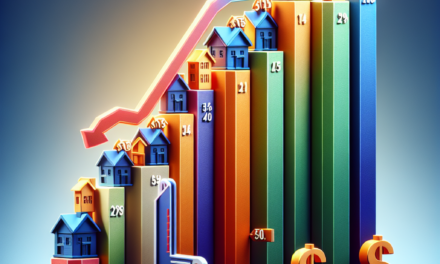“Steady Futures, Anticipated Moves: Markets Poised for Trump’s Cabinet Reveal”
Introduction
U.S. futures remained stable as investors exercised caution, anticipating key announcements regarding President-elect Donald Trump’s cabinet selections. The financial markets, which have experienced heightened volatility in the wake of the recent presidential election, are closely monitoring these developments for insights into the future policy direction of the incoming administration. Market participants are particularly interested in appointments to economic and financial positions, which could signal potential shifts in regulatory and fiscal strategies. As traders await these critical announcements, the steadiness in futures reflects a temporary pause in market movements, underscoring the significance of the forthcoming cabinet decisions on investor sentiment and market dynamics.
Impact Of Trump Cabinet Announcements On US Futures
As the financial world keenly observes the unfolding political landscape, US futures have maintained a steady course, reflecting a cautious optimism among investors. This stability comes amid anticipation of forthcoming announcements regarding the composition of former President Donald Trump’s cabinet. The potential impact of these announcements on the markets is a subject of considerable interest, as investors seek to gauge the future direction of economic policy and its implications for various sectors.
The anticipation surrounding Trump’s cabinet selections is not without reason. Historically, the composition of a presidential cabinet can significantly influence market sentiment, as it often signals the administration’s policy priorities. For instance, the appointment of individuals with a pro-business stance could be perceived as favorable by investors, potentially leading to a rally in stock prices. Conversely, selections that suggest a more regulatory approach might prompt caution among market participants, resulting in subdued trading activity.
In this context, the steadiness of US futures suggests that investors are adopting a wait-and-see approach. This cautious stance is likely driven by the desire to avoid premature reactions to speculative information. Instead, market participants appear to be waiting for concrete announcements that will provide clearer insights into the administration’s policy direction. This prudent approach underscores the importance of informed decision-making in the face of political uncertainty.
Moreover, the impact of cabinet announcements on US futures is not limited to domestic considerations. The global interconnectedness of financial markets means that international investors are also closely monitoring these developments. The composition of Trump’s cabinet could have far-reaching implications for international trade, foreign policy, and global economic relations. As such, the stability of US futures may also reflect a broader global sentiment, as investors worldwide assess the potential ripple effects of these political decisions.
In addition to the immediate market reactions, the long-term implications of Trump’s cabinet selections are also a focal point for investors. The individuals chosen to lead key departments such as Treasury, Commerce, and State will play pivotal roles in shaping economic policy and regulatory frameworks. Their decisions could influence everything from tax policy and trade agreements to financial regulation and infrastructure investment. Consequently, the market’s response to these announcements will likely extend beyond short-term fluctuations, as investors adjust their strategies to align with the anticipated policy landscape.
Furthermore, the steadiness of US futures amidst this anticipation highlights the resilience of financial markets. Despite the inherent uncertainties associated with political transitions, markets have demonstrated an ability to adapt and respond to new information. This adaptability is a testament to the sophisticated mechanisms that underpin modern financial systems, enabling them to absorb and process a wide array of data points.
In conclusion, as markets await the announcement of Trump’s cabinet selections, the stability of US futures reflects a measured approach by investors. This cautious optimism underscores the importance of informed decision-making in navigating political uncertainties. While the immediate impact of these announcements will be closely watched, their long-term implications for economic policy and market dynamics are equally significant. As such, investors remain vigilant, ready to adjust their strategies in response to the evolving political landscape and its potential effects on the financial markets.
Market Reactions To Political Uncertainty In The US
As the financial world keeps a watchful eye on the unfolding political landscape in the United States, US futures have maintained a steady course, reflecting a cautious optimism among investors. This stability comes amid anticipation of key cabinet announcements from President Donald Trump, whose administration’s policy directions are expected to significantly influence market dynamics. The interplay between political developments and market reactions is a complex one, with investors often seeking to balance potential risks and opportunities. In this context, the current steadiness of US futures suggests a wait-and-see approach, as market participants assess the implications of forthcoming political decisions.
The anticipation surrounding Trump’s cabinet selections is not merely a matter of personnel changes; it is indicative of broader policy shifts that could impact various sectors of the economy. For instance, the appointment of individuals with specific industry backgrounds or ideological leanings could signal regulatory changes, tax reforms, or shifts in trade policy. These potential changes are of particular interest to investors, who are keen to understand how they might affect corporate earnings, consumer spending, and overall economic growth. Consequently, the market’s current steadiness may reflect a collective pause as investors await clearer signals from the incoming administration.
Moreover, the political uncertainty inherent in any transition of power can lead to heightened market volatility. However, the current situation appears to be characterized by a degree of resilience, as evidenced by the stability of US futures. This resilience may be attributed to several factors, including a robust economic backdrop and strong corporate earnings, which provide a buffer against potential political disruptions. Additionally, the global nature of financial markets means that investors are also considering international factors, such as economic conditions in Europe and Asia, which can influence US market trends.
In addition to domestic political developments, investors are also mindful of the broader geopolitical landscape. The Trump administration’s foreign policy stance, particularly regarding trade relations with major partners such as China and the European Union, is a key area of focus. Any shifts in trade policy could have far-reaching implications for global supply chains and international commerce, thereby affecting market sentiment. As such, the steadiness of US futures may also reflect a broader assessment of geopolitical risks and opportunities.
Furthermore, the role of central banks, particularly the Federal Reserve, cannot be overlooked in this context. Monetary policy decisions, including interest rate adjustments and quantitative easing measures, play a crucial role in shaping market expectations. Investors are closely monitoring the Federal Reserve’s actions and statements for indications of future policy directions, which could either mitigate or exacerbate the effects of political uncertainty. The interplay between fiscal and monetary policy is thus a critical factor in understanding market reactions.
In conclusion, the steadiness of US futures amidst the anticipation of Trump cabinet announcements underscores the intricate relationship between political developments and market dynamics. While political uncertainty can often lead to volatility, the current situation suggests a more measured response from investors, who are weighing potential risks against a backdrop of economic resilience and global considerations. As the political landscape continues to evolve, market participants will remain vigilant, ready to adjust their strategies in response to new information and emerging trends.
Analyzing The Stability Of US Futures Amid Political Changes
As the financial world keeps a watchful eye on the evolving political landscape, US futures have demonstrated a remarkable steadiness, reflecting a cautious optimism among investors. This stability comes at a time when markets are eagerly anticipating announcements regarding the composition of former President Donald Trump’s cabinet. The anticipation surrounding these announcements has created a unique environment where political developments are closely intertwined with market dynamics, influencing investor sentiment and market behavior.
In the realm of financial markets, futures contracts serve as a barometer for investor expectations, providing insights into how markets might react to forthcoming events. The steadiness of US futures suggests that investors are adopting a wait-and-see approach, balancing their portfolios in anticipation of potential policy shifts that could arise from new cabinet appointments. This cautious stance is indicative of a broader trend where market participants are keenly aware of the implications that political decisions can have on economic policies, regulatory frameworks, and international trade relations.
The anticipation of cabinet announcements is not merely a matter of political curiosity; it holds significant economic implications. Investors are particularly interested in understanding how the new cabinet might influence key areas such as fiscal policy, taxation, and regulatory oversight. These factors are crucial in shaping the economic landscape, affecting everything from corporate profitability to consumer spending. As such, the composition of the cabinet could provide valuable clues about the administration’s priorities and its approach to addressing pressing economic challenges.
Moreover, the steadiness of US futures can also be attributed to the broader context of economic indicators and market fundamentals. Despite the political uncertainties, the US economy has shown resilience, with key indicators such as employment rates, consumer confidence, and corporate earnings painting a relatively positive picture. This underlying economic strength provides a buffer against potential market volatility, allowing investors to maintain a level of confidence even amid political transitions.
In addition to domestic factors, global economic conditions also play a role in shaping the stability of US futures. The interconnectedness of global markets means that developments in other major economies can have ripple effects on US markets. For instance, trade relations with key partners, geopolitical tensions, and international economic policies are all factors that investors must consider when assessing the potential impact of political changes in the US. The ability of US futures to hold steady in this complex environment underscores the resilience of the market and the adaptability of investors in navigating multifaceted challenges.
As markets await the cabinet announcements, it is important to recognize that the steadiness of US futures is not merely a reflection of investor complacency. Rather, it is a testament to the sophisticated strategies employed by market participants who are adept at managing risk and capitalizing on opportunities. By maintaining a balanced approach, investors are positioning themselves to respond swiftly to any shifts in the political and economic landscape.
In conclusion, the stability of US futures amid the anticipation of Trump cabinet announcements highlights the intricate relationship between politics and markets. As investors continue to monitor developments closely, the ability of futures to remain steady serves as a reminder of the resilience and adaptability of financial markets in the face of uncertainty. This period of anticipation underscores the importance of informed decision-making and strategic planning in navigating the ever-evolving landscape of global finance.
The Role Of Political Appointments In Financial Market Trends
In the intricate world of financial markets, political developments often play a pivotal role in shaping investor sentiment and market trends. As US futures hold steady, market participants are keenly awaiting announcements regarding former President Donald Trump’s cabinet appointments. These political appointments are not merely ceremonial; they have profound implications for economic policy, regulatory frameworks, and ultimately, market dynamics. Understanding the interplay between political appointments and financial markets is crucial for investors seeking to navigate the complexities of market trends.
Political appointments, particularly those at the cabinet level, serve as a barometer for the administration’s policy priorities. For instance, the appointment of a Treasury Secretary can signal the administration’s stance on fiscal policy, taxation, and government spending. Similarly, the selection of a Commerce Secretary may provide insights into trade policies and economic growth strategies. Consequently, these appointments can influence investor expectations and market behavior, as they offer clues about the future direction of economic policy.
Moreover, the financial markets are inherently forward-looking, meaning that investors make decisions based on their expectations of future events. As such, the anticipation of cabinet appointments can lead to market volatility, as investors adjust their portfolios in response to perceived policy shifts. For example, the appointment of a pro-business figure to a key economic position might be interpreted as a signal of deregulation and tax cuts, potentially boosting investor confidence and driving stock prices higher. Conversely, the selection of a candidate perceived as favoring stricter regulations could lead to market caution and a potential sell-off in certain sectors.
In addition to influencing market sentiment, political appointments can also impact specific industries and sectors. For instance, the appointment of an Energy Secretary with a background in renewable energy might be seen as a positive development for the clean energy sector, leading to increased investment and stock price appreciation in that area. On the other hand, industries that are heavily regulated, such as banking and healthcare, may experience heightened uncertainty as they await clarity on regulatory policies from newly appointed officials.
Furthermore, the global nature of financial markets means that US political appointments can have far-reaching implications beyond domestic borders. International investors closely monitor these developments, as changes in US economic policy can affect global trade, investment flows, and currency markets. For example, a shift towards protectionist trade policies could lead to concerns about global economic growth, impacting stock markets worldwide.
While the immediate impact of cabinet appointments on financial markets can be significant, it is essential to recognize that these effects are often short-lived. Over time, the actual implementation of policies and their outcomes will have a more lasting influence on market trends. Therefore, while investors may react swiftly to announcements, they must also consider the broader economic context and the potential long-term implications of policy changes.
In conclusion, political appointments play a crucial role in shaping financial market trends by influencing investor expectations, sector-specific dynamics, and global economic conditions. As markets await announcements regarding Trump’s cabinet appointments, understanding the potential implications of these decisions is vital for investors seeking to make informed decisions. By closely monitoring political developments and their impact on economic policy, investors can better navigate the complexities of financial markets and position themselves for success in an ever-evolving landscape.
Investor Sentiment And US Futures During Cabinet Transitions
As the financial world keenly observes the unfolding political landscape, US futures have maintained a steady course, reflecting a cautious yet optimistic investor sentiment. This stability comes at a time when markets are eagerly anticipating announcements regarding the composition of former President Donald Trump’s cabinet. The anticipation surrounding these announcements is palpable, as investors seek clarity on the potential policy directions that could influence economic growth and market dynamics.
The transition period between administrations is often marked by a degree of uncertainty, which can lead to volatility in financial markets. However, the current steadiness in US futures suggests that investors are adopting a wait-and-see approach, balancing their portfolios in anticipation of forthcoming policy signals. This measured response can be attributed to a combination of factors, including the economic policies previously championed by Trump, which were largely pro-business and aimed at deregulation and tax reform. Investors are hopeful that similar policies might be continued or adapted, fostering an environment conducive to economic expansion.
Moreover, the composition of the cabinet is expected to provide insights into the administration’s priorities, particularly in areas such as trade, healthcare, and infrastructure. Each of these sectors holds significant implications for market performance. For instance, a cabinet with a strong focus on infrastructure development could signal increased government spending, potentially boosting sectors related to construction and manufacturing. Conversely, a cabinet that prioritizes trade protectionism might introduce uncertainties in global supply chains, affecting multinational corporations and their market valuations.
In addition to domestic policy considerations, the international community is also closely monitoring these developments. The global interconnectedness of financial markets means that US policy decisions can have far-reaching implications. As such, international investors are equally vested in understanding the potential shifts in US foreign policy and trade relations. The cabinet announcements are expected to shed light on these aspects, influencing global market sentiment and investment strategies.
Furthermore, the role of key economic advisors within the cabinet cannot be understated. These individuals are instrumental in shaping fiscal and monetary policies, which directly impact inflation rates, interest rates, and overall economic stability. Investors are particularly interested in the selection of individuals who will lead departments such as the Treasury and Commerce, as their expertise and policy inclinations will play a crucial role in steering the economic agenda.
While the anticipation of cabinet announcements holds the market’s attention, it is important to recognize that investor sentiment is also influenced by broader economic indicators. Recent data on employment, consumer spending, and corporate earnings continue to paint a picture of a resilient economy, providing a buffer against potential market disruptions. This resilience, coupled with the Federal Reserve’s monetary policy stance, offers a degree of reassurance to investors navigating this transitional period.
In conclusion, as US futures hold steady amidst the anticipation of Trump cabinet announcements, the financial markets are poised at a critical juncture. Investors are carefully weighing the potential implications of these announcements, seeking to align their strategies with the anticipated policy directions. The coming weeks will undoubtedly provide greater clarity, allowing investors to make informed decisions in an ever-evolving economic landscape. As the transition unfolds, the interplay between political developments and market dynamics will continue to shape investor sentiment and the trajectory of US futures.
Historical Context: Market Responses To Presidential Cabinet Announcements
In the realm of financial markets, the anticipation surrounding presidential cabinet announcements has historically played a significant role in influencing investor sentiment and market movements. As US futures hold steady, investors are keenly awaiting the announcements from President Trump regarding his cabinet selections. This moment presents an opportunity to reflect on how markets have historically responded to similar events, providing a lens through which current market behavior can be better understood.
Historically, the announcement of a new presidential cabinet has been a pivotal moment for financial markets, often serving as an early indicator of the administration’s policy direction. Investors closely scrutinize these announcements, as they can signal potential shifts in economic policy, regulatory changes, and international relations. For instance, the appointment of a Treasury Secretary with a background in banking might suggest a more market-friendly approach, potentially boosting investor confidence and leading to a rally in stock prices. Conversely, the selection of a candidate perceived as favoring stringent regulations could trigger concerns among investors, resulting in market volatility.
The market’s response to cabinet announcements is not solely based on the individuals selected but also on the broader economic context in which these announcements occur. During periods of economic uncertainty or instability, markets may react more sensitively to cabinet selections, as investors seek reassurance about the administration’s ability to manage economic challenges. For example, during the financial crisis of 2008, the appointment of experienced financial professionals to key cabinet positions was met with a positive response from the markets, as it was perceived as a commitment to stabilizing the economy.
Moreover, the timing of these announcements can also influence market reactions. Announcements made during market hours may lead to immediate fluctuations in stock prices, as investors quickly digest the news and adjust their portfolios accordingly. In contrast, announcements made after market hours may result in more measured responses, as investors have time to analyze the implications before the next trading session begins. This dynamic underscores the importance of timing in the context of market responses to political events.
In addition to the immediate market reactions, the long-term impact of cabinet announcements can also be significant. The policies and initiatives implemented by cabinet members can shape the economic landscape for years to come, influencing factors such as interest rates, trade policies, and government spending. As such, investors often look beyond the initial market response to assess the potential long-term implications of cabinet selections on their investment strategies.
As markets await President Trump’s cabinet announcements, it is essential to consider these historical patterns and contextual factors. While US futures remain steady, reflecting a cautious optimism among investors, the eventual market response will likely depend on the perceived alignment of the cabinet selections with the administration’s stated policy goals. By understanding the historical context of market responses to presidential cabinet announcements, investors can better navigate the complexities of the current economic environment and make informed decisions about their investment strategies.
In conclusion, the anticipation surrounding President Trump’s cabinet announcements serves as a reminder of the intricate relationship between political events and financial markets. By examining historical precedents and considering the broader economic context, investors can gain valuable insights into potential market reactions and position themselves strategically in an ever-evolving landscape. As the announcements unfold, the interplay between political decisions and market dynamics will continue to shape the financial landscape, underscoring the importance of staying informed and adaptable in the face of change.
Strategies For Navigating Market Volatility During Political Events
In the ever-evolving landscape of financial markets, investors are constantly seeking strategies to navigate the volatility that often accompanies political events. As US futures hold steady in anticipation of announcements regarding former President Donald Trump’s cabinet, market participants are reminded of the intricate relationship between politics and market dynamics. Understanding how to manage investments during such periods is crucial for both seasoned investors and newcomers alike.
Political events, particularly those involving significant figures like a former president, can introduce a level of uncertainty that reverberates through financial markets. The anticipation of policy changes, regulatory shifts, or geopolitical tensions can lead to fluctuations in asset prices. In such an environment, maintaining a clear strategy becomes paramount. One effective approach is diversification, which involves spreading investments across various asset classes to mitigate risk. By not putting all their eggs in one basket, investors can cushion the impact of market swings triggered by political developments.
Moreover, staying informed is a fundamental strategy for navigating market volatility. Investors should keep abreast of news related to political events and understand the potential implications for different sectors. For instance, announcements about cabinet appointments can signal shifts in policy priorities, which may affect industries such as healthcare, energy, or technology. By analyzing these developments, investors can make informed decisions about adjusting their portfolios to align with anticipated changes.
In addition to diversification and staying informed, maintaining a long-term perspective is essential. Political events, while impactful in the short term, often have less influence on long-term market trends. Investors who focus on their long-term goals and resist the urge to make impulsive decisions based on short-term market movements are more likely to achieve favorable outcomes. This approach requires discipline and a commitment to a well-thought-out investment strategy.
Furthermore, employing risk management techniques can help investors navigate periods of political uncertainty. Utilizing stop-loss orders, for example, can limit potential losses by automatically selling a security when it reaches a predetermined price. This strategy can provide a safety net during volatile times, allowing investors to protect their capital while still participating in the market.
Another strategy involves seeking opportunities in market volatility. Political events can create price dislocations, where certain assets may become undervalued or overvalued due to emotional reactions from market participants. Savvy investors can capitalize on these opportunities by identifying assets that are temporarily mispriced and positioning themselves accordingly. This requires a keen understanding of market fundamentals and the ability to act decisively when opportunities arise.
As US futures remain steady amid anticipation of Trump’s cabinet announcements, it is crucial for investors to remain vigilant and adaptable. Political events are an inherent part of the investment landscape, and the ability to navigate them effectively can significantly impact investment outcomes. By employing strategies such as diversification, staying informed, maintaining a long-term perspective, utilizing risk management techniques, and seeking opportunities in volatility, investors can position themselves to weather the uncertainties that political events often bring.
In conclusion, while political events can introduce volatility into financial markets, they also present opportunities for those who are prepared. By adopting a strategic approach and remaining focused on their investment objectives, investors can successfully navigate the complexities of market volatility during political events, ultimately enhancing their potential for long-term success.
Q&A
1. **What are US futures?**
US futures are financial contracts that obligate the buyer to purchase, or the seller to sell, an asset at a predetermined future date and price. They are used to speculate on the direction of the market or hedge against potential price changes.
2. **Why are US futures holding steady?**
US futures are holding steady as investors are in a wait-and-see mode, anticipating potential market impacts from upcoming announcements regarding President Trump’s cabinet appointments.
3. **What impact do cabinet announcements have on the market?**
Cabinet announcements can impact the market by signaling potential policy directions, regulatory changes, and economic priorities, which can influence investor sentiment and market stability.
4. **Who are some key figures expected in Trump’s cabinet?**
Key figures expected in Trump’s cabinet may include individuals with significant influence in areas such as finance, defense, and foreign policy, though specific names would depend on the time of the announcement.
5. **How do investors typically react to political announcements?**
Investors often react to political announcements by adjusting their portfolios based on perceived risks or opportunities, which can lead to market volatility or stability depending on the nature of the announcements.
6. **What sectors might be most affected by these announcements?**
Sectors such as finance, healthcare, and energy might be most affected by these announcements, as they are often directly influenced by government policies and regulatory changes.
7. **What should investors do in anticipation of such announcements?**
Investors should stay informed, assess their risk tolerance, and consider diversifying their portfolios to mitigate potential risks associated with political uncertainty and market fluctuations.
Conclusion
US futures remained stable as investors awaited announcements regarding President-elect Donald Trump’s cabinet appointments. The market’s steady performance reflects a cautious optimism, with investors anticipating potential policy directions and economic impacts from the new administration. The lack of significant movement suggests that traders are in a holding pattern, assessing how the forthcoming cabinet selections might influence fiscal and regulatory policies. Overall, the market’s steadiness underscores a wait-and-see approach, as stakeholders look for clarity on the future political landscape and its implications for economic growth.





